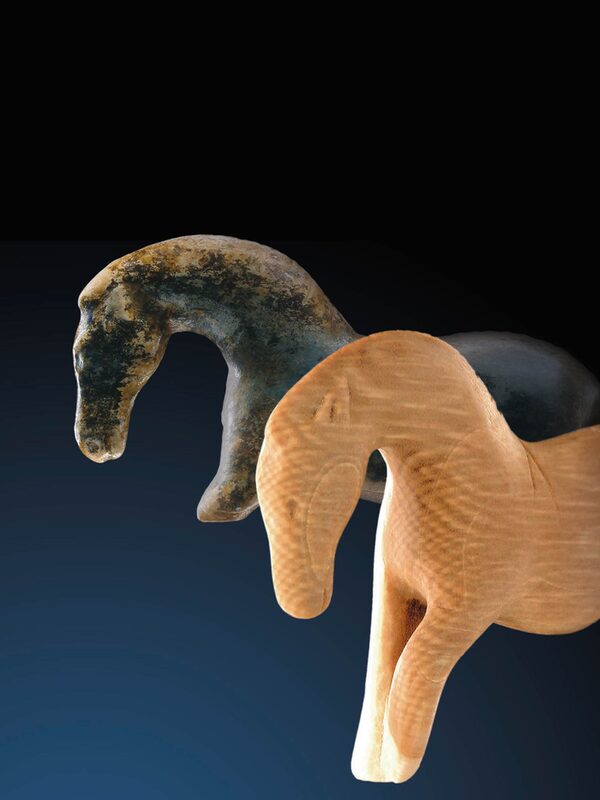Prehistoric forms - European Ice Age figurative art
From March 1 to June 11, 2023, the traveling exhibition of the Arbeitsgemeinschaft Weltkultursprung from Ulm presented works of art from the Neolithic period from all over Europe at sam.
Prehistoric forms - European Ice Age figurative art
The traveling exhibition of the Arbeitsgemeinschaft Weltkultursprung from Ulm presented 23 selected works of art from the Neolithic period (42,000 to 11,700 BC) from all over Europe at sam until June 11, 2023. They represent the oldest known works of art of mankind and are characterized by their artistic uniqueness and modern aesthetics.
The traveling exhibition depicts the Ice Age fauna that surrounded early man: mammoth, wild horse, deer and bison. Rocks such as soapstone, limestone, slate or ivory from mammoth tusks were used as materials. Many of these figures have only been partially preserved.
The aim of the traveling exhibition was to convey the original condition of the objects and to show their artistic development. To this end, the figures were precisely hand-carved and completed by professional master carvers from original materials. This gave visitors their first impression of Ice Age art as it was almost 40,000 years ago.
The exhibition also explained the significance of the Palaeolithic caves in the Swabian Jura, which are listed as a UNESCO World Heritage Site and are home to the world's oldest examples of figurative art.
Supplemented by the oldest "works of art" in Hesse
The exhibition was thematically supplemented with selected original finds from the Ice Age caves near Runkel-Steeden (Limburg-Weilburg district), which are in the Nassau Antiquities Collection (SNA) of the Wiesbaden City Museum Foundation. They are among the oldest human artifacts in the SNA as well as the oldest "works of art" in Hesse. For Palaeolithic archaeology, the Steeden site also represents an important reference to the Swabian Alb. In addition, the excavations conducted from Wiesbaden in the 19th century provided important impulses for research into prehistoric man.
The traveling exhibition was a production of the Arbeitsgemeinschaft Weltkultursprung, funded by the Baden-Württemberg Foundation.
Dieter Rams. A look back and ahead
sam - City museum on the market
sam - Stadtmuseum am MarktStiftung Stadtmuseum Wiesbaden
Address
65183 Wiesbaden
Arrival
Telephone
Opening hours
Tue to Sun 11-17 h
Thu 11-20 o'clock
Administration
Wiesbaden City Museum Foundation
Bierstadter Str. 1
65189 Wiesbaden
